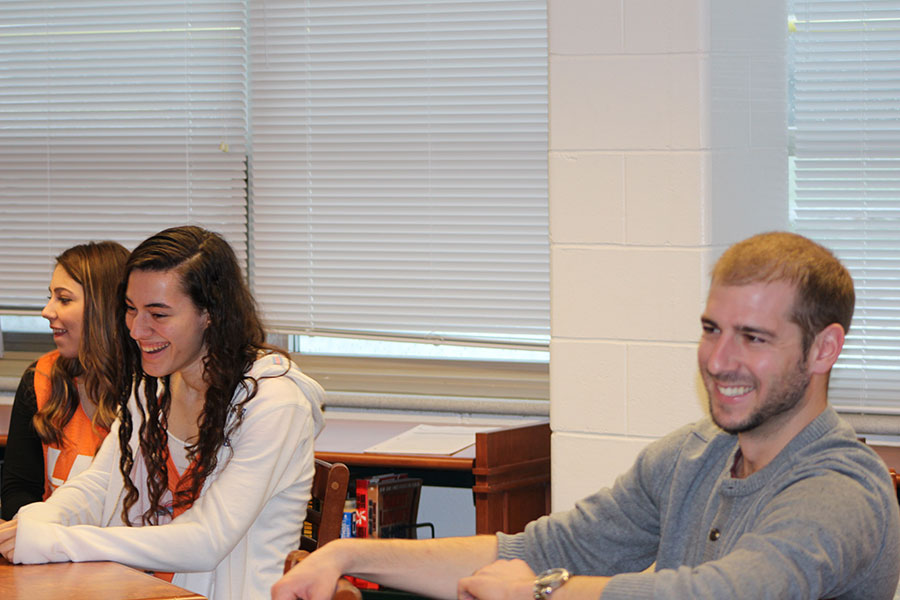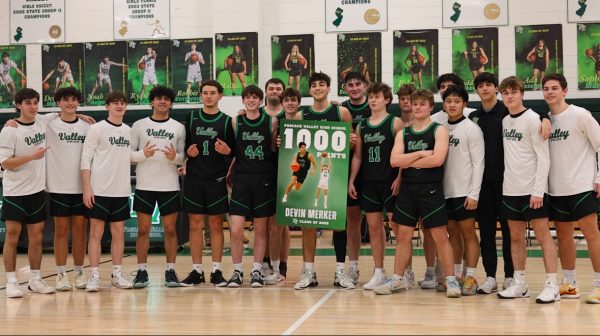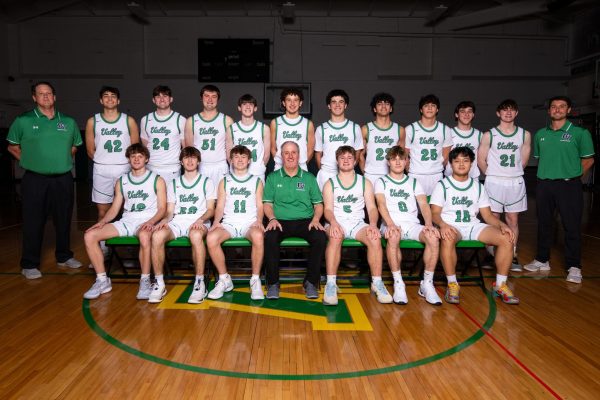An inside look at tomorrow’s teachers
PV program provides field experience for students considering careers in education
Always remember your teachers are here to help you not hurt you. Reach out if you need to.
Senior year is filled with exciting opportunities to take advantage of classes and internships beyond the core courses. The internship program at our school allows seniors to leave for the afternoon and pursue their interests that could become possible areas of study beyond high school. Some students work in clothing stores, hospitals, or offices and learn the ins and outs of the business that they’re interning for.
One of the more popular internship options is the Tomorrow’s Teachers Program. The program, which started in South Carolina and is now nationally recognized, is led by Mr. Casey Gotliffe, although he attributes a lot of credit to Mrs. Laura Grier for organizing it and allowing it to run so smoothly.
“The basis of the class is that the students have the opportunity to not only take a college level class and get college credits for the class [if they so choose through Rider University or Fairleigh Dickinson University],” Gotliffe said, “but also to intern at the end of the day.”
Each day after lunch, regardless of the block scheduling, he sees the students for 51 minutes before they leave PV to venture off to either Smith School or Meadowbrook School and intern for the rest of the afternoon. The interns get assigned a cooperative teacher, and they then integrate themselves into the classroom for the rest of the year.
“I teach the class like an Education 101 course,” Gotliffe said. “It’s basically an intro to Education class.” The students are taught lessons to carry over into their classrooms each day.”
Some things they’re learning are:
- The fundamentals of Bloom’s Taxonomy, which is creating a holistic education for students
- Different classroom management skills
- How to research and create lesson plans that they can implement with in their classrooms in the elementary schools
- How to deal with discipline and behavior
- History of education in this country
Unlike other high schools that offer this program where the students don’t actually begin interning until December, PV students are thrown into interning right away in September.
Simone Scance, who interns for a second grade class at Smith School, feels, “the hardest part about being a teacher that I hadn’t anticipated prior to starting the internship is teaching lessons. Coming up with the lesson plan isn’t difficult, but rather physically teaching is what is hard. Teaching a lesson is nerve racking each time, similar to when you get nervous to present a project.”
While the job may be difficult she still enjoys working with her second graders. When asked what it was that she enjoyed most, she immediately responded: “I love when the students are happy with their work. Seeing a student struggle to get something down and then finally understanding is really gratifying. It’s simple reassurance that I’m doing something right.”
To help the interns become more comfortable with their positions, Gotliffe explained, “every Friday we have a faculty meeting where we come together and discuss everything that’s happening in the internships, whether they have any new responsibilities, if they had any behavioral issues and if they had to deal with it.”
Gotliffe’s hopes are that with each year, the program will expand and the students will be able to intern in middle school and high school settings, as well as the elementary schools they already work in. Scance is confident that the hands-on experience she is getting in the classroom now will help her in the future as she pursues education/teaching in college, and the other interns would most likely agree.








Laura Grier • Dec 2, 2014 at 6:57 pm
Thank you Samantha for writing about this course offering and the amazing opportunity PV is providing for our future educators. I truly hope that any student considering a career in education considers taking this course. Mr. Gotliffe has done an outstanding job growing the program. He is so passionate about teaching and he shares this passion with all of his students, especially those in Tomorrow’s Teachers’ Program. Anyone interested in the course should speak to him and set up a date when they can sit in on the class and shadow a fellow student at their elementary school internship.